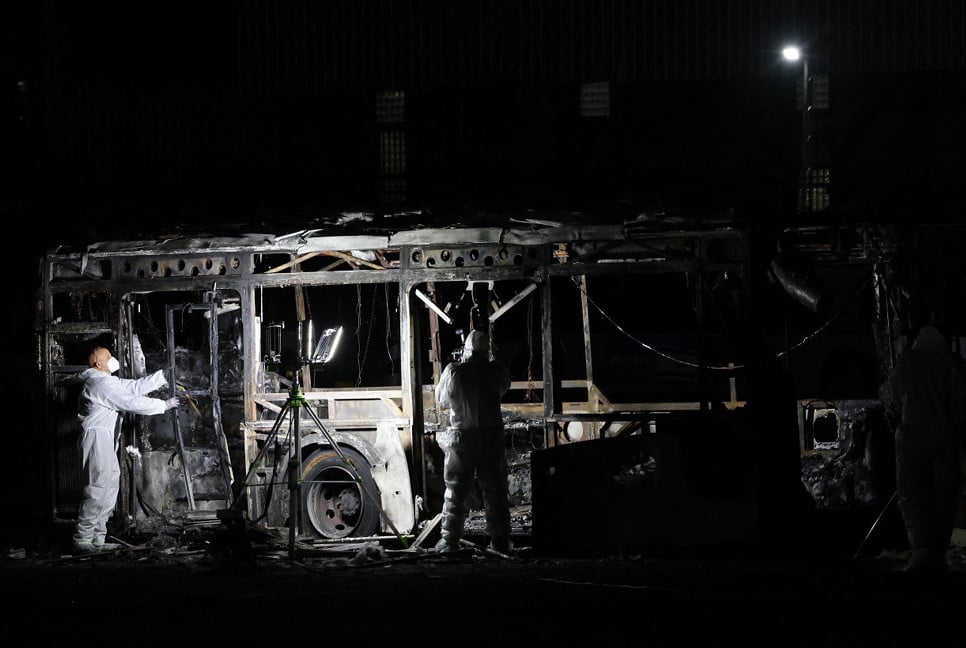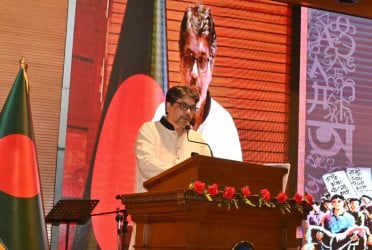“Bonduker Nol-i, Khomotar Utsa” (Political power grows out of the barrel of the gun), the slogan once scrawled on almost every other wall in this city is no longer visible.
However, the memory of Charu Majumder, the frail idealogue who made the 1920s Mao Zedong slogan popular in India and died in police custody 50 years ago this date, still haunts generations who have lived through the bloodbath that his Naxalites had ignited and the brutal, sometimes indiscriminate, reprisals that the state unleashed in retaliation.
Movies, theatre, poetry and novels made or penned in this city which was the epicentre of the `Naxal Amol’ (Naxalite age) still romanticise and celebrate the armed movement which the Ultra-Leftists who followed Majumder waged.
“His thoughts and the ideology behind the Naxalbari movement which was a peasants’ movement demanding share-cropper rights in North Bengal still remain relevant. The farmers’ movement is still alive.
“… Yes, we are now focussing on protecting constitutional democracy first as we feel that is more important today in the fight against fascism, nexus between remnant feudal and big business as also combat misrule by different shades of governments,” Abhijit Mazumdar, 62, son of the Naxalite leader and West Bengal state secretary of the Communist Party of India Marxist-Leninist (Liberation), told PTI in an interview.
Abhijit pointed out the current focus also formed part of the core of what Charu Majumder and the original CPI (ML), which was founded in 1969, stood for. The original CPI(ML) split into many factions of which the CPIML (L) is the largest besides being a recognised overground political party.
CPI(ML) of course did not believe in constitutional democracy and was carved out of the CPI(M) party when its radicals accused party leaders of revisionism by following the path of Parliamentary democracy and were expelled. These radicals met in Kolkata on Lenin’s birthdate April 22 in 1969 to form the new party.
Two North Bengal based Communist leaders Charu Majumder and Saroj Dutta led the new party. The name ‘Naxalites’ which common people gave its followers came from the agrarian revolt which Charu Majumder, popularly called CM, along with leaders like Kanu Sanyal and Jangal Santhal had led two years before the new party was founded, at a village named Naxalbari, near Siliguri in the northern part of the state.
Abhijit, a professor of English literature at a college in North Bengal, who was witness to his father being taken out of a police morgue to be hurriedly cremated at Kolkata’s Keoratala crematorium under the watchful eyes of the police and CRPF personnel, said with a wry smile: “Accusing intellectuals involved in the Bhima Koregaon movement of being ‘Urban Naxals’ itself shows the continued relevance of the movement.” However, despite winning a dozen seats in Bihar’s legislature and one in Jharkhand, the party has no representatives in the state where it was founded despite pockets of support in North Bengal and in a few border districts of the state.
Dipankar Bhattacharya, the general secretary of CPIML (L) told PTI: “We are trying to demystify Charu Majumder’s legacy. Naxalbari movement was an outcome of the earlier ‘Tebhaga’ share-croppers movement, it wasn’t air-dropped from China as some would have it.” “Yes, some mistakes were made (by the Naxal movement). The then popular slogan ‘China’s Chairman is our Chairman’ was wrong. The movement was indigenous and for the rights of farmers, tribals and students.” Charu Majumder’s CPI(ML) carried out an armed struggle against the Union which included a policy of ‘annihilation of class enemies’ hoping to bring about radical change. The only help China ever gave the movement was “moral support”.
The Indian state, alarmed more by the movement’s ideology and the popularity it gained among students and intellectuals, unleashed what many saw as a wave of extra-judicial killings to stem and end the radical uprising which came at a time when unemployment, food shortages and price rise were rampant.
Ashoke Mukhopadhyay, an author whose book ‘Charu Majumdar: The Dreamer Rebel’ is to be officially released this month and who has researched both the Naxal movement and its leader extensively, said, “Nearly 2,000 people accused of being Naxals were killed in what could be termed as extra-judicial killings between 1967 and 1972 in Bengal alone. The figure was nearly 5,000 all over India.” Many of those killed were the country’s best and brightest and included students from IIT Kharagpur, Kolkata’s prestigious Presidency and Scottish Church colleges and Jadavpur University.
“The towns of Barasat and Cossipore, certain localities in Kolkata such as Beleghata, Tollygunge and Behala besides prisons like Alipore and Dum Dum jails, virtually became killing fields,” said Mukhopadhyay, who had earlier written ‘Naxalites through the eyes of Calcutta Police’.
Many more simply went missing. Saroj Dutta, Charu Majumder’s comrade-in-arms and a former journalist with the Amrita Bazar Patrika, went missing and was found beheaded in Kolkata’s Maidan in the heart of the city in August 1971, a year before CM died.
Policemen too were killed in Naxalite ‘annihilation’ killings, some extremely brutally, bringing an edge of revenge into the battle.
Abhijit Mazumdar and many others believe that the police “killed” CM by simply denying him heart medicines and oxygen which he used to take regularly while constantly questioning him throughout his incarceration after his arrest from a Central Kolkata safehouse in the early hours of July 16, 1972.
“I came with my mother to the morgue after we learnt of his death. Our neighbours in Siliguri had bought tickets for us to fly down. What struck me as his body was shown to us was that the soles of his feet were totally black,” Abhijit said.
As the body was taken under heavy security to the cremation grounds, groups of Naxal sympathisers, emerged from the shadows to shout slogans “Comrade Charu Majumder zindabad” and then vanished into thin air as the police bore down on them.
The city remained virtually under curfew as one of India’s most influential radical Leftist ideologues and topmost Naxal leader was taken to a funeral pyre, ignoring pleas by his family for him to be taken to his hometown of Siliguri.
Home-made arms and bombs, weapons snatched from police forces, as well as abandoned Indian and Pakistani arms gathered from the battlefield of Bangladesh in the aftermath of the 1971 war were used by the young Naxalites. The legacy of that armed struggle still reflects in the political milieu of eastern and northern India where many mainstream parties patronise armed bands which work for them.
While CPIML (L) will organise memorial meetings for Majumder, who was 53 when he died, his legacy in the cities’ universities and colleges which once supported his thoughts, is today hardly to be found.
“Students have moved away from radical Left thoughts, especially so since the onset of liberalisation in 1991. Charu Majumder’s legacy, if it lives, may find more resonance among the older generation,” said Prof Sabyasachi Basu Roy Chaudhury, vice chancellor of Rabindra Bharati University.
A book, ‘Tebhaga, Naxalbari, Charu Majumder’ published by Liberation publishers for the occasion, quotes from Rabindra Nath Tagore’s poem ‘Mrityunjoy’ (One who overcame death) as the caption to CM’s last photograph taken in police custody: “No matter how great you are, You cannot be greater than death, ‘I am greater than death’ will be the words I speak, before I take my final bow.” PTI JRC NN NN
This report is auto-generated from PTI news service.
























































